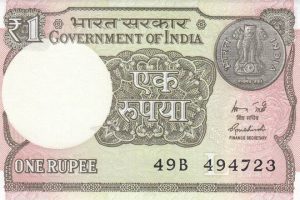 The Union Ministry of Finance has notified ‘Printing of One Rupee Currency Notes Rules, 2020’ vide Gazzette Notification G.S.R. 95(E) dated February 7, 2020. “The One Rupee notes shall be printed at the note printing presses for issue under the authority of Government of India for circulation. The Union Ministry of Finance has notified ‘Printing of One Rupee Currency Notes Rules, 2020’ vide Gazzette Notification G.S.R. 95(E) dated February 7, 2020. “The One Rupee notes shall be printed at the note printing presses for issue under the authority of Government of India for circulation. |
|
|
|
|
 The UK-based OneWeb company has sent 34 satellites into orbit on a single Soyuz rocket, from Baikonur port, Kazakhstan. The aims are to have the full network in operation by the end of 2021. This is the 50th Soyuz mission conducted by Arianespace, as the company plans to perform 19 more medium-lift Soyuz from three spaceports by 2021. Its mission was to drop its satellite batch into one of 12 planes planned for the constellation. The UK-based OneWeb company has sent 34 satellites into orbit on a single Soyuz rocket, from Baikonur port, Kazakhstan. The aims are to have the full network in operation by the end of 2021. This is the 50th Soyuz mission conducted by Arianespace, as the company plans to perform 19 more medium-lift Soyuz from three spaceports by 2021. Its mission was to drop its satellite batch into one of 12 planes planned for the constellation. |
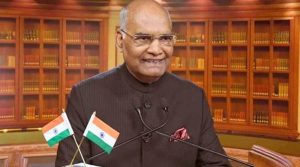 President Ram Nath Kovind presented ‘President’s Colour’ to the INS Shivaji at a ceremony in Lonavala, Maharashtra. The Presentation of Colour or Standards by the Supreme Commander of the Armed Forces is an acknowledgement of the unit’s meritorious service. INS Shivaji was commissioned in 1945. It is now the premier technical training establishment of the Indian Navy with the motto Kar-masu Kaushalam. INS Shivaji imparts training in an engineering discipline to personnel of the Navy, Coast Guard, other sister services and allied countries. It has trained over two lakh officers and sailors, both Indian and international, since inception. All courses conducted at INS Shivaji are recognised by the All India Council for Technical Education. President Ram Nath Kovind presented ‘President’s Colour’ to the INS Shivaji at a ceremony in Lonavala, Maharashtra. The Presentation of Colour or Standards by the Supreme Commander of the Armed Forces is an acknowledgement of the unit’s meritorious service. INS Shivaji was commissioned in 1945. It is now the premier technical training establishment of the Indian Navy with the motto Kar-masu Kaushalam. INS Shivaji imparts training in an engineering discipline to personnel of the Navy, Coast Guard, other sister services and allied countries. It has trained over two lakh officers and sailors, both Indian and international, since inception. All courses conducted at INS Shivaji are recognised by the All India Council for Technical Education. |
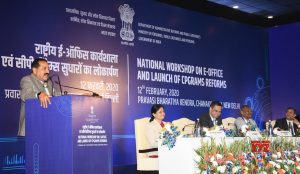 National Workshop on e-office was inaugurated in New Delhi by Union Minister of State for Personnel, Public Grievances and Pensions, Dr Jitendra Singh. During the National Workshop on e-office, Centralized Public Grievance Redress And Monitoring System (CPGRAMS) Reforms also launched by the minister. After the launch, he stated that the number of public grievances has increased to 19 lakh at present from 2 lakh in 2014. The Government of India in 2019 has received 18.7 lakh public grievances and disposed 18.1 lakh of them. The Centralized Public Grievance Redress And Monitoring System (CPGRAMS) 7.0 version has mapped the last mile grievance officers hence saving the time as well as improving the quality of disposal of cases. The CPGRAMS aligns with the Government of India’s vision of “Minimum Government-Maximum Governance”. National Workshop on e-office was inaugurated in New Delhi by Union Minister of State for Personnel, Public Grievances and Pensions, Dr Jitendra Singh. During the National Workshop on e-office, Centralized Public Grievance Redress And Monitoring System (CPGRAMS) Reforms also launched by the minister. After the launch, he stated that the number of public grievances has increased to 19 lakh at present from 2 lakh in 2014. The Government of India in 2019 has received 18.7 lakh public grievances and disposed 18.1 lakh of them. The Centralized Public Grievance Redress And Monitoring System (CPGRAMS) 7.0 version has mapped the last mile grievance officers hence saving the time as well as improving the quality of disposal of cases. The CPGRAMS aligns with the Government of India’s vision of “Minimum Government-Maximum Governance”. |
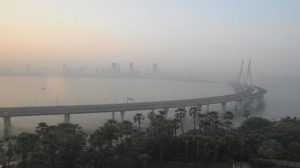 The Brihanmumbai Municipal Corporation (BMC) has approved the setting up of an air quality monitoring network of 90 stations in Mumbai, Maharashtra. The air quality monitoring network of 90 stations will make it the largest such network in India, overtaking Delhi, which is currently having 38 monitors. Location-wise updates on the quality of air will be provided by these stations. The air quality monitoring network project will be funded by the BMC and private players and is expected to be finished in the next five years. At present, Mumbai is having 30 air quality monitoring stations out of which 5 stations are under Brihanmumbai Municipal Corporation (BMC), 10 stations are under the System of Air Quality Weather Forecasting And Research (SAFAR) and 15 stations come under the Maharashtra Pollution Control Board (MPCB). The Brihanmumbai Municipal Corporation (BMC) has approved the setting up of an air quality monitoring network of 90 stations in Mumbai, Maharashtra. The air quality monitoring network of 90 stations will make it the largest such network in India, overtaking Delhi, which is currently having 38 monitors. Location-wise updates on the quality of air will be provided by these stations. The air quality monitoring network project will be funded by the BMC and private players and is expected to be finished in the next five years. At present, Mumbai is having 30 air quality monitoring stations out of which 5 stations are under Brihanmumbai Municipal Corporation (BMC), 10 stations are under the System of Air Quality Weather Forecasting And Research (SAFAR) and 15 stations come under the Maharashtra Pollution Control Board (MPCB). |
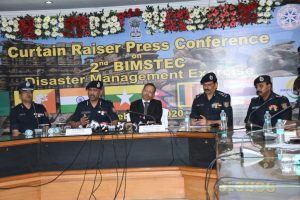 BIMSTEC Disaster Management Exercise 2020 has been started in Bhubaneswar, Odisha. The National Disaster Response Force (NDRF) is organizing the BIMSTEC Disaster Management Exercise 2020 on behalf of the Government of India. The BIMSTEC Disaster Management Exercise was inaugurated by Odisha Chief Minister Naveen Patnaik. BIMSTEC Disaster Management Exercise 2020 has been started in Bhubaneswar, Odisha. The National Disaster Response Force (NDRF) is organizing the BIMSTEC Disaster Management Exercise 2020 on behalf of the Government of India. The BIMSTEC Disaster Management Exercise was inaugurated by Odisha Chief Minister Naveen Patnaik. |
|
|
 The Vivad se Vishwas Scheme was announced by Finance Minister Nirmala Sitaraman during the Budget 2020-21. On February 12, 2020, the Union Cabinet approved to make required changes in the Vivad Se Vishwas Bill, 2020 in order to widen its cover over litigation pending in debt recovery tribunal. The Vivad se Vishwas Scheme was announced by Finance Minister Nirmala Sitaraman during the Budget 2020-21. On February 12, 2020, the Union Cabinet approved to make required changes in the Vivad Se Vishwas Bill, 2020 in order to widen its cover over litigation pending in debt recovery tribunal. |
|
|
|
 On February 12, 2020 the Union Cabinet approved the Memorandum of Understanding signed between India and Iceland in the field of fisheries. On February 12, 2020 the Union Cabinet approved the Memorandum of Understanding signed between India and Iceland in the field of fisheries. |
|
|
 On February 12, 2020, the Union Cabinet approved on capital infusion in three Public Sector Units namely United India Insurance Company (UIICL), Oriental Insurance Company Limited (OICL) and National Insurance Company Limited (NICL). On February 12, 2020, the Union Cabinet approved on capital infusion in three Public Sector Units namely United India Insurance Company (UIICL), Oriental Insurance Company Limited (OICL) and National Insurance Company Limited (NICL). |
|
|
 On February 11, 2020, United States approved sale of Integrated Air Defence Weapon System to India. The cost of the system is estimated as 1.86 billion USD. On February 11, 2020, United States approved sale of Integrated Air Defence Weapon System to India. The cost of the system is estimated as 1.86 billion USD. |
|
|
|
You need to login to perform this action.
You will be redirected in
3 sec
